A lot of us keep a gargantuan container of all-purpose flour in our pantry—a near-lifetime supply, if you're anything like our test kitchen. All-purpose flour is the faithful old floury friend that we lean on for pancakes, muffins, and everything in between. More devoted bakers might even have a few wildcards in their baking arsenals, like whole wheat pastry flour or almond flour or spelt flour. But only in the most organized and well-stocked of home pantries have we found a bag of bread flour, ultra-soft cake flour, and self-rising flour resplendent in its old-school packaging.
If you don't bake a whole lot, or didn't plan quite so far ahead (*raises hand*), you might get tripped up on a recipe that calls for one of these somewhat uncommon, vaguely esoteric flours. Should you take another trip to the grocery store to pick them up? No, we say happily. As it turns out, both cake flour and self-rising flour can be easily faked at home, using ingredients that you most probably already have on hand. Here’s how to make a worthy substitute for cake flour and self-rising flour with everyday pantry staples.
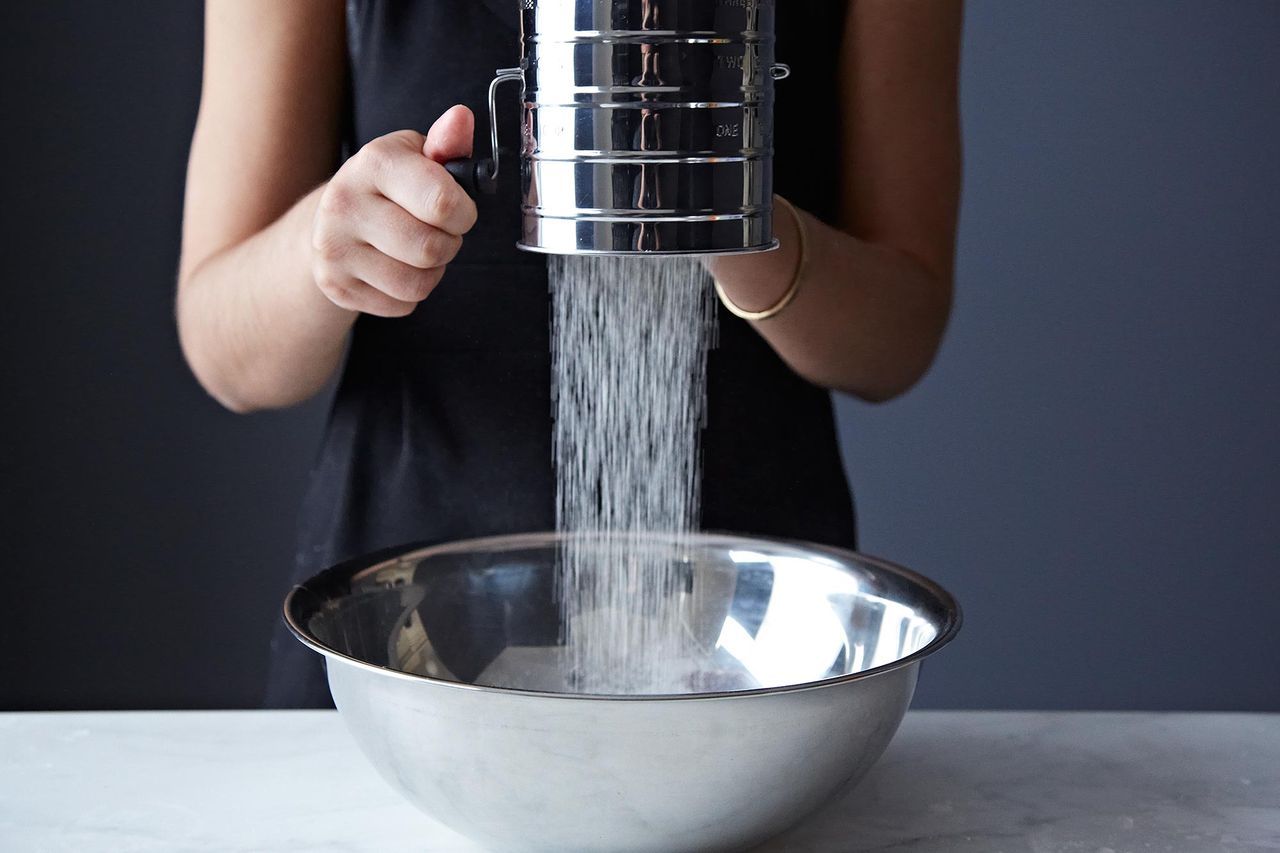
What Is Cake Flour?
Before you freak out about the fact that you may not have cake flour on hand, you may start by asking yourself, “what is cake flour? Is cake flour the same thing as all-purpose flour?” For starters, no, it’s not the same product. Cake flour is a light, delicate, finely milled flour. It has a lower protein content (8 percent) than its all-purpose cousin (11 percent), which means any batter you make with it won't develop very much gluten, and your finished product will be lighter and softer, with a finer crumb. If you're whipping up an airy chiffon cake or feathery angel food cake, your recipe very likely calls for cake flour, and you'll be glad for the tender, melt-in-your-mouth results. You wouldn't want to use cake flour in something like a sturdy loaf of bread, however, as it requires stronger, higher-protein-content bread flour—but that's another story.
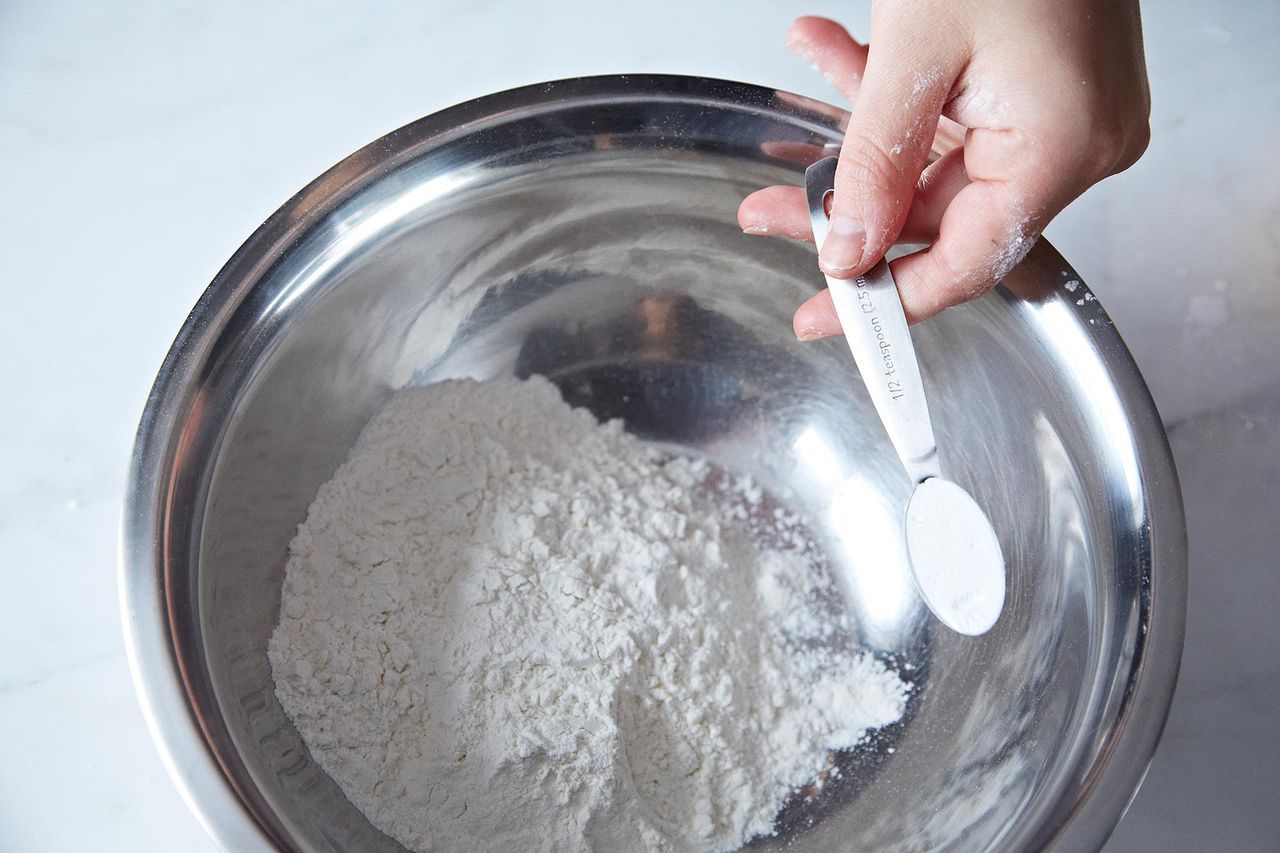
Here's the good news, though: Even if you don't have cake flour immediately on hand, you, too, can have featherlight baked goods by using good old all-purpose flour. You can replicate cake flour by measuring out the same amount of all-purpose flour as the measure of cake flour called for. Then, remove two tablespoons of flour for every cup of all-purpose flour you're using, and replace each of those tablespoons with cornstarch. And in grams: 100 grams of sifted cake flour can be subbed with 85 grams sifted all-purpose flour plus 15 grams cornstarch.
So, if your recipe calls for 2 cups of cake flour, measure out 2 cups of AP flour, remove 4 tablespoons, and add 4 tablespoons of cornstarch. If your recipe calls for 3 1/2 cups of cake flour, you'll remove 7 tablespoons, and so on and so forth.
Whisk together your flour and cornstarch, and then sift the mixture through a fine mesh sieve. A lot. About five times, actually. Since we're aiming for lightness, you want your substitute for cake flour to be very-well aerated, with the corn starch completely integrated. Sorry for the inconvenience, but it wasn't our idea—Alice said you have to.
And voilà, you have cake flour!
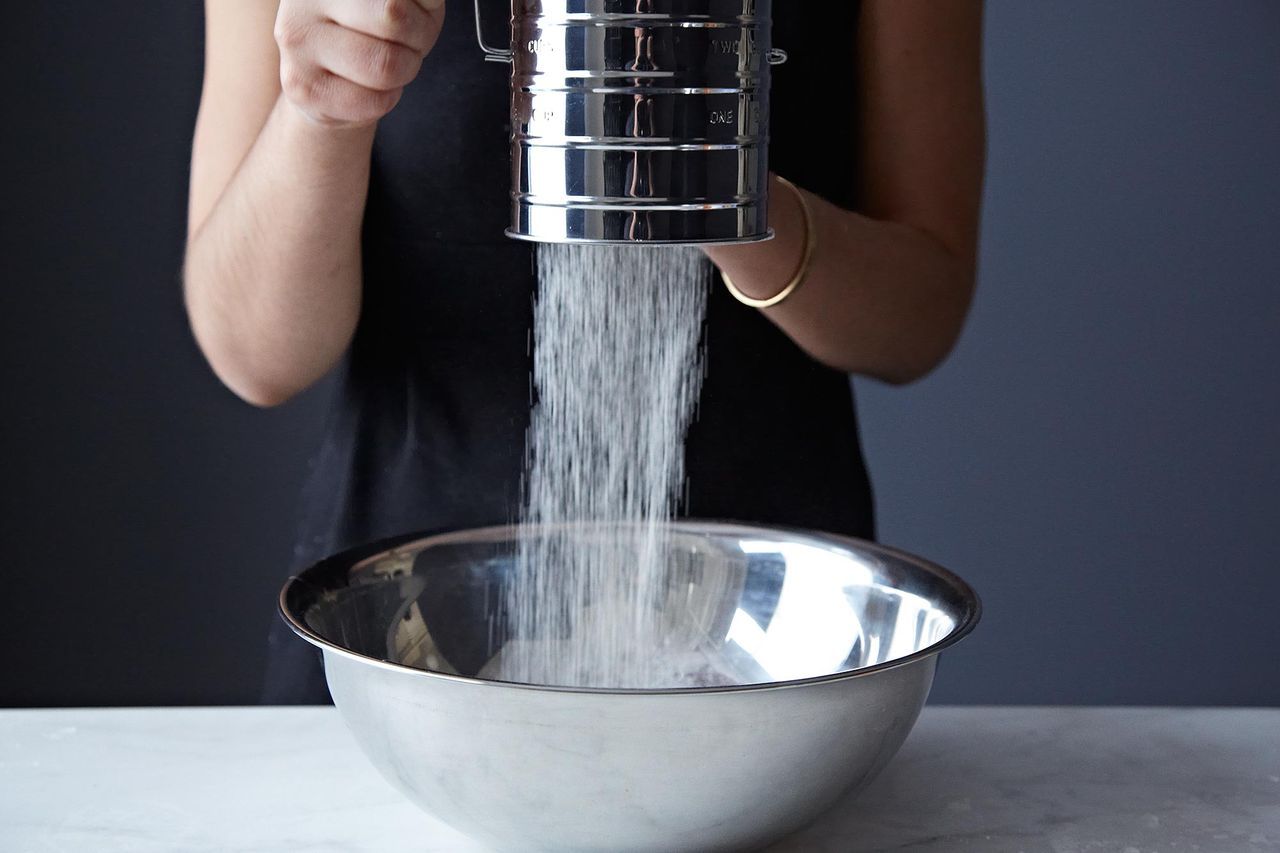
What Is Self-Rising Flour?
Another specialty type of flour that you may come across when baking is self-rising flour. Once again, self-rising flour is not the same thing as all-purpose flour nor is it the same thing as cake flour, bread flour, or pastry flour. Self-rising flour is almost exactly like all-purpose flour, but it has added salt and leavening mixed into it. Thus, recipes that call for this type of flour typically won't require additional salt or leavening. Because of this, you should never substitute self-rising flour in place of all-purpose flour as the amount of leaveners (think: baking powder and baking soda), plus the amount of salt, will drastically alter your baked goods...and not for the better. Self-rising flour is a very big deal in Southern cooking, especially in biscuits. And if you don't currently have it in your pantry, it's also pretty simple to substitute with ingredients you do already have: all-purpose flour, salt, and baking powder. For every cup of self-rising flour that your recipe calls for, measure out one cup of all-purpose flour and add 1/4 teaspoon salt and 1 1/4 teaspoons baking powder. In grams: 100 grams of self-rising flour can be subbed with 100 grams of all-purpose flour, plus 5.5 grams baking powder and 1.13 grams salt.
So, if your recipe calls for 2 cups of self-rising flour, you'll measure out 2 cups of all-purpose flour, and add 1/2 teaspoon salt and 2 1/2 teaspoons baking powder.
Whisk everything together, and then sift once again using a fine mesh sieve. That's right, about five times total, until it's super, super light and fluffy. Aeration, you know. Alice's orders.
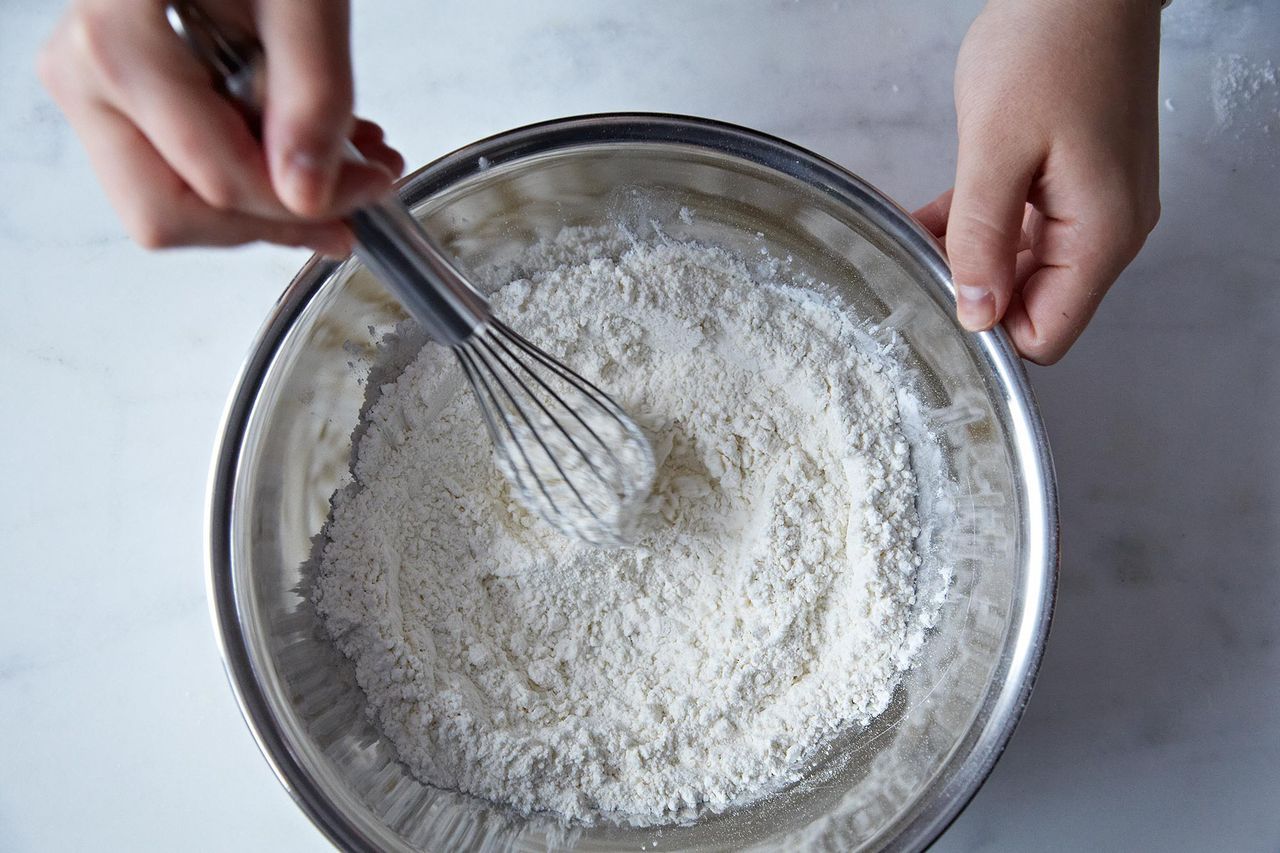
Keep in mind, however, that certain cult-following brands of self-rising flour (such as White Lily and Presto, the latter of which is actually labeled as self-rising cake flour) are similar to cake flour in that they're milled from softer wheat and have a lower protein content than all-purpose. If your recipe calls for one of these flours, or you feel like being a total overacheiver (we see you), use your DIY cake flour instead of all-purpose in the above self-rising flour conversion; at the end of the day, you'll be adding cornstarch, salt, and leavener in the correct proportions to basic all-purpose flour. And your unthinkably flaky, tender, mile-high biscuits will thank you.
As for the kind of stuff you can make with cake flour and self-rising flour? Here are a few of our favorite recipes that use these two kinds of flour.
Recipes with Cake Flour
This ultralight cake is a take on a classic, from Kienow's Bohemian Bakery in Portland, OR. It features a silky, fluffy banana-based cake, which soaks up a banana-rum syrup, then gets topped with sliced bananas and vanilla mascarpone cream.
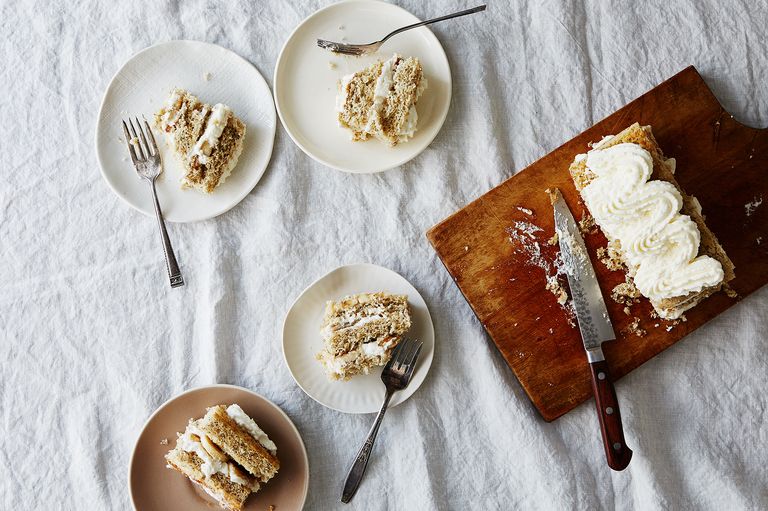
This is a simple yellow cake with an easy-to-follow recipe: 4 eggs, 3 cups of sifted cake flour, 2 cups of sugar, 1 cup of butter and milk, each. Top with a fruity raspberry frosting and eat cheerfully.
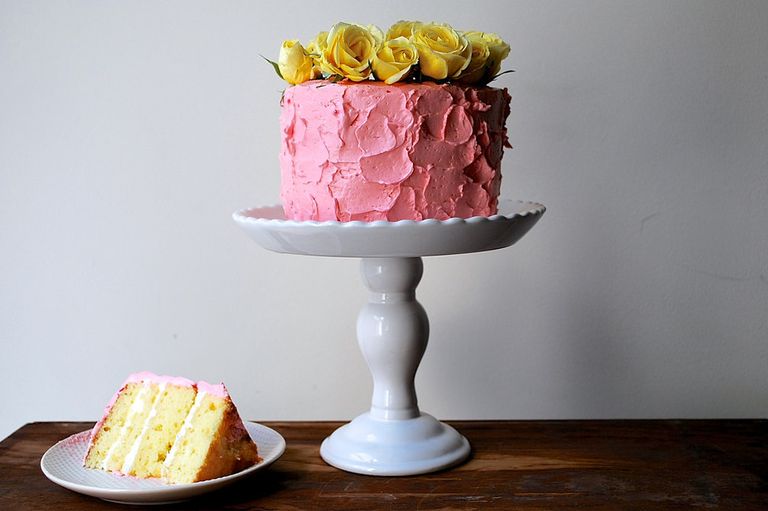
These beloved cookies, filled with thick pools of melty chocolate discs, are special also because of their use of cake flour—they end up with a chewy but not dense texture.

We understand that we’ve already spent a good amount of time talking about the wonders of cake flour in cake. But no dessert demonstrates the delicate beauty of cake flour like an angel food cake. This cloud-like dessert is already ethereal, thanks to the use of a dozen whipped egg whites. But the light cake flour also contributes to the airy fine crumb that you’ll have to see to believe in a slice of this treat.
/9804f941-3abf-48ed-9842-6e56b504fb96--2017-0801_stella-parks-angels-food-cake_julia-gartland-433.jpg)
Recipes with Self-Rising Flour
This simple, satisfying, super-flavorful bread will soon be a part of your brunch rotation. It's got it all: sausage, chives, butter, and lots of cheese, along with cake flour to give it lift. Slather more butter on a warm slice, and nobody will be mad.
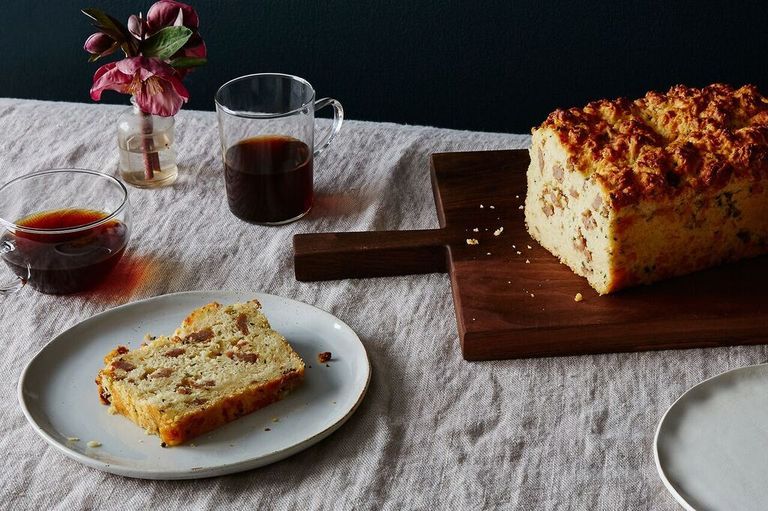
Here's a one-bowl, no-measure, impossible-to-mess-up cake. You don't even need extra leavener, because the cake's self-rising flour does that job for you.

Remember how we mentioned that Southern home cooks rely heavily on self-rising flour for baked goods like biscuits? See how this specialty flour works its magic in these super simple drop biscuits. The only other ingredients that you need are buttermilk and really smoky, really flavorful, thick-cut bacon strips.
/c55cda1e-8405-4273-8b6a-df6aa2abaee7--2021-0203_3-ingredient-biscuits_3x2_rocky-luten_033.jpg)
What's your favorite way to use cake flour or self-rising flour? Let us know in the comments.









/9804f941-3abf-48ed-9842-6e56b504fb96--2017-0801_stella-parks-angels-food-cake_julia-gartland-433.jpg)


/c55cda1e-8405-4273-8b6a-df6aa2abaee7--2021-0203_3-ingredient-biscuits_3x2_rocky-luten_033.jpg)

See what other Food52 readers are saying.